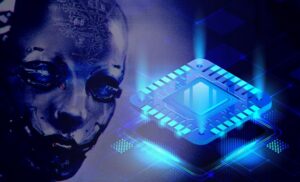Flexible learning modes are becoming the new norm in education. If you haven’t used online education tools at some point, you probably know someone that has. Artificial intelligence (AI) in flexible learning will likely grow as these technologies become increasingly common.
With 63% of high school students and 45% of elementary pupils using e-learning and digital tools daily, flexible learning is here to stay. It will change as it grows, with much of that coming from disruptive technologies like AI. Here’s a closer look at how AI could impact flexible learning modes.
Expanding Access to Flexible Learning Modes
One of the biggest advantages of flexible learning is that it makes education more accessible, and AI could take that further. AI tutors and similar learning resources can assist students when you’re unavailable, expanding the hours students can access flexible learning tools. That opens online education to people with unusual schedules or time differences, making it more accessible.
“AI tutors and similar learning resources can assist students when you’re unavailable.”
AI translation and communication tools can also help provide learning resources to more people worldwide. You could use your expertise to write lessons in your own language that natural language processing (NLP) then translates to make them applicable globally. These tools could help a smaller body of teachers offer flexible education to a broader audience.
AI tools can also analyze student trends to recognize where flexible learning modes fall short with different groups. You can then adjust education resources and lesson plans to meet diverse needs. These adaptations will ensure they work for more people.
Enabling Personalized Learning and Tutoring
AI could also increase personalization in flexible learning modes. Students tend to learn better when you tailor materials and methods to their unique learning styles and needs. However, that can be difficult to do in a flexible environment where you may not be around them every day. AI can help.
Intelligent algorithms can monitor student performance to recognize what works best for them. They can then suggest changes to make or even automatically adapt e-learning tools to meet specific needs. That way, you can ensure everyone gets the education they need without monitoring them manually.
“Intelligent algorithms can monitor student performance to recognize what works best for them.”
You can already see similar tools in action today. Some online education platforms adapt assignment difficulty automatically according to various students’ needs. Applying that same concept on a larger scale could make flexible learning more effective.
Potential Downsides to AI in Flexible Learning
AI should be a tool to help teachers, not a replacement for them.
AI’s impact on flexible learning modes is largely positive, but there are some potential downsides, too. One of the most significant is the danger of over-reliance. These tools aren’t perfect, but they can feel like it. You could end up making flexible learning worse rather than better if you rely too heavily on them and adapt to insights that may not be accurate.
Studies show that instructors and students alike worry about privacy concerns related to AI. These tools require a lot of data to work effectively, so using them could entail gathering lots of sensitive information about students. That could introduce breach risks, and some may consider it an invasion of privacy.
In light of these concerns, it’s important to keep AI’s limitations in mind when applying it to flexible learning. AI should be a tool to help teachers, not a replacement for them. Tempering expectations and avoiding overapplication can help prevent privacy-related concerns, too.
AI Can Take Flexible Learning Modes to New Heights
Flexible learning may be the future of education, and AI is the future of flexible learning. Intelligent algorithms can make these hybrid solutions more accessible, effective and engaging, as long as you keep their downsides in mind.
AI is already starting to influence flexible learning, and its impact will only grow from here. New benefits may emerge as it does, improving student outcomes and reducing teacher workload.
Also, Read 8 Best Ways to Use VR in Education
- AI
- ai art
- ai art generator
- ai robot
- AIIOT Technology
- artificial intelligence
- artificial intelligence certification
- artificial intelligence in banking
- artificial intelligence robot
- artificial intelligence robots
- artificial intelligence software
- blockchain
- blockchain conference ai
- coingenius
- conversational artificial intelligence
- crypto conference ai
- dall-e
- deep learning
- Education
- google ai
- machine learning
- plato
- plato ai
- Plato Data Intelligence
- Plato Game
- PlatoData
- platogaming
- scale ai
- zephyrnet
More from AIIOT Technology

5 Benefits for Businesses Using Automated Machine Learning

Generative AI Is Changing the Way We Build Data Centers

Using Generative AI for Educational Purposes

3 Manufacturing Issues and How AR Can Solve Them

The Role of IoT In Advancing Circular Economy Models

How To Protect Robots’ CPUs From Hacking

6 Simple Tips to Convert Ecommerce Store Visitors into Customers

How AI Is Performing Real-World Chemistry Experiments

How AI Is Driving Data Center Design | Aiiot Talk

Is Your Business Ready to Adopt a Decentralized Leadership Model?

The Future of AI in School Buses: Expectations vs. Reality


